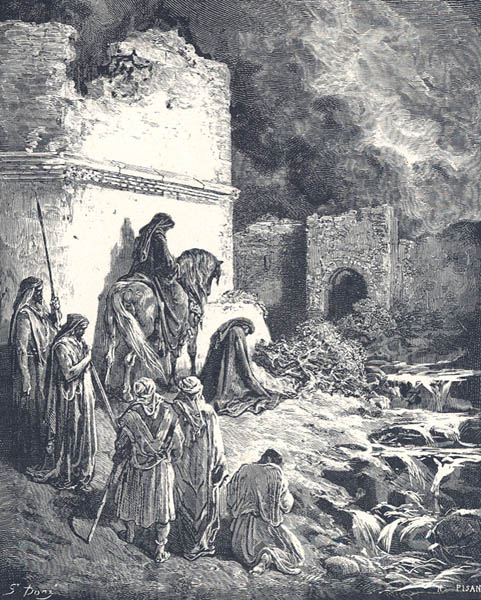Laments at the Destroyed Temple
Excavating the biblical text reveals ancient Jewish prayers

In 586 B.C.E.a Jerusalem lay devastated—the Temple in ruins, the king’s palace destroyed. The Babylonians, led by the fearsome Nebuchadnezzar, had deported Judah’s most prominent citizens to Babylonia. There they lived in exile for 50 years until Cyrus, King of Persia, allowed them to return under Sheshbazzar and Zerubbabel. During the Exile, according to the Bible, the Babylonian “captain of the guard left [only] some of the poorest of the land to be vinedressers and ploughmen” (2 Kings 25:12).
Recent discoveries, however, question whether this is really the whole picture. At a site called Ketef Hinnom (the Shoulder of Hinnom, referring to part of the Hinnom Valley that lies west of the original site of Jerusalem), Tel Aviv University archaeologist Gabriel Barkay has excavated a series of rock-cut tombs. The tombs themselves were robbed in antiquity and much of their structure had been cut away by later quarrying. But Barkay could nevertheless reconstruct the design of the tombs, from which it was clear that they originally had been hewed out of the stone before the Babylonian destruction of Jerusalem.
Already a library member? Log in here.
Institution user? Log in with your IP address.

